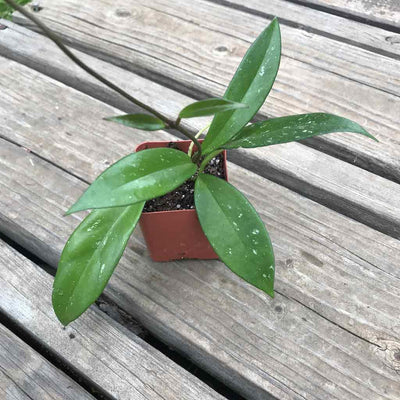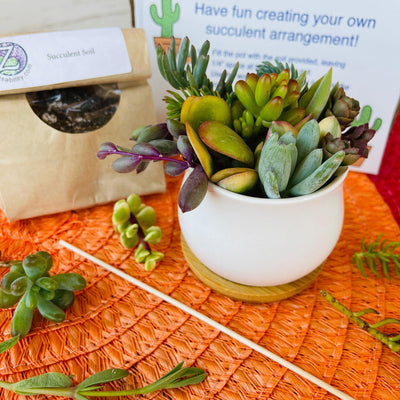Are succulent plants good for beginners?
Succulent plants are excellent plants for beginners. They are also excellent plants for anyone who has tried numerous times to keep a houseplant alive and unfortunately, failed. In my case, it almost always had to do with underwatering.

What makes succulents such great beginner plants?
Succulents are considered some of the easiest-care plants in the world. This is because they hold a lot of water in their leaves or stems, or both. If you think of cactus, which are a type of succulent, they are mostly water. Because they are made up of mostly water, they can survive long periods of drought in deserts or their native environments.

Since succulent plants hold so much water, they can go much longer between waterings than tropical or semi-tropical houseplants. Some plants, like Agave, Cactus, and Aloe, can go months without water, though this is not a recommended care tip – especially for potted plants.
Are some types of succulents better than others for beginners?
Yes, some succulents are easy-care, while some succulents can be more sensitive to their environment and need more specialized care. A good general rule-of-thumb we learned when we first got obsessed with succulent plants is ‘the fatter the leaves/stem, the less water it needs’. It might seem like those plants need more water to keep them fat, but the reality is that they already have a lot of water in them, so they can go a long time without more water.
Top five recommended beginner succulents
Here are the top five succulents we would recommend if you are just beginning to collect or grow succulents:
-
Crassula ovata - Crassula ovata plants are incredibly hardy, have a very high tolerance for full-sun, and hold a lot of water in their stems. This means they can really survive some underwatering.
This type of Crassula also come in a variety of colors, and even have a couple of types with unique leaf shapes, like 'Gollum' and 'Hobbit'. Colorful types include 'Hummel's Sunset' which has leaves that take on pinks, reds, and yellows, like a sunset. Variegated Crassula ovata, or 'Tricolor' has white, cream and green leaves that take on pink margins with temperature fluctuations or increased sun exposure.

-
Agave (almost all types) - Agave plants are very drought-tolerant, can take full or partial sun, and most don't have pest issues at all. These plants grow relatively slow and are available in both compact and large varieties.
Agave victoriae-reginae is a type that stays relatively small, only growing to about 2' x 2'. Agave americana on the other hand can get very large, 6-7' x 6-7' and cluster as they mature.

-
Opuntia 'Santa Rita Baby' - Once planted, this beautiful dwarf purple cactus can be basically left alone. Water occasionally during Spring and Summer growth seasons and enjoy the delicate fuchsia colored blooms in the Spring. They stay compact, can take full sun, and turn especially purple during the winter months when the night temperatures drop drastically.

-
Othonna capensis 'Ruby Necklace' - Everyone needs a 'string' succulent in their collection, including beginner plant parents. We recommend 'Ruby Necklace' because it's got some stunning coloration, is one of the few (maybe the only one) that can take full sun, and almost never has pest problems. But watch for slugs if planted in the ground, we learned this the hard way.
This plant takes on more ruby red coloration with increased sun exposure or temperature fluctuations. It also grows really, really long strands, as shown in the picture below.

-
Echeveria (most types) - We don't want to leave out the rosettes that get many people hooked on succulents in the first place. There are many types that are very drought-resistant and don't attract a lot of pests.
Most types of Echeveria only want partial sun, so if you have a nice sunny window - preferably south or east facing - they should be perfectly happy indoors. Always make sure they get proper air circulation. Some recommended easy-for-beginners types are Echeveria gibbiflora, Echeveria subsessilis, and Echeveria agavoides.

Ready to get some succulents?
- Shop new arrivals
- Shop baby succulents
- Shop medium succulents
- Shop succulent cuttings
- Shop Aloe & Agave
- Shop Cactus & Pads










Leave a comment